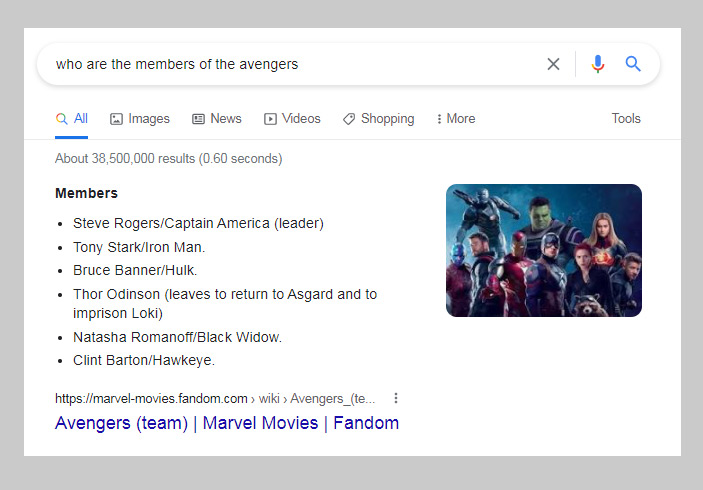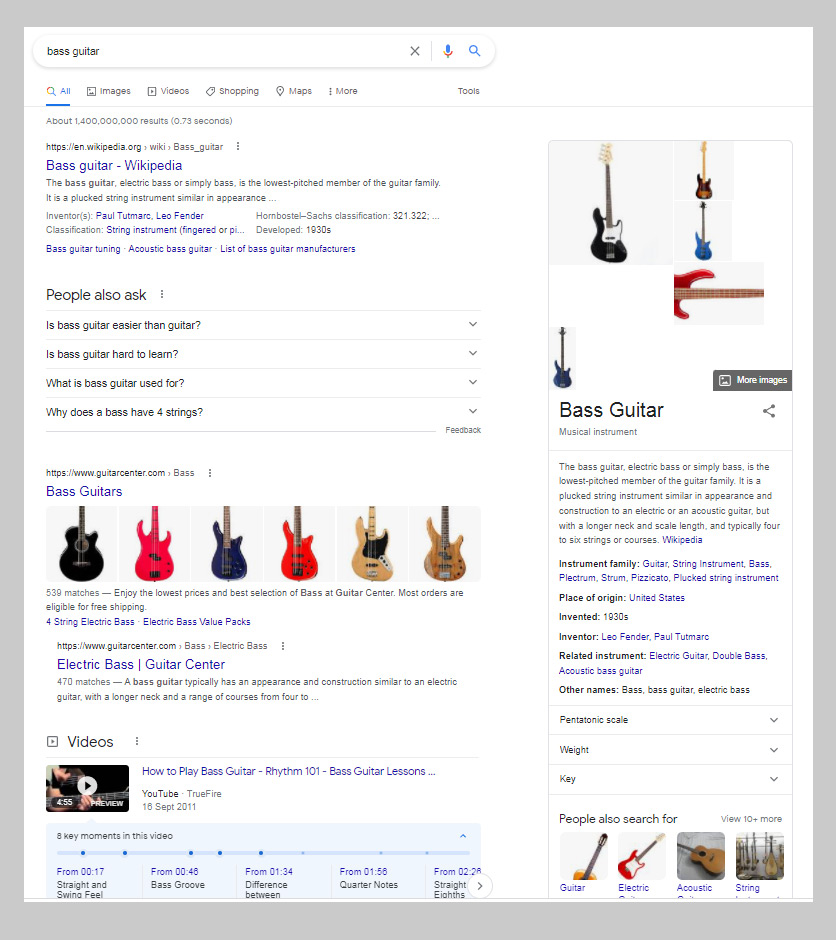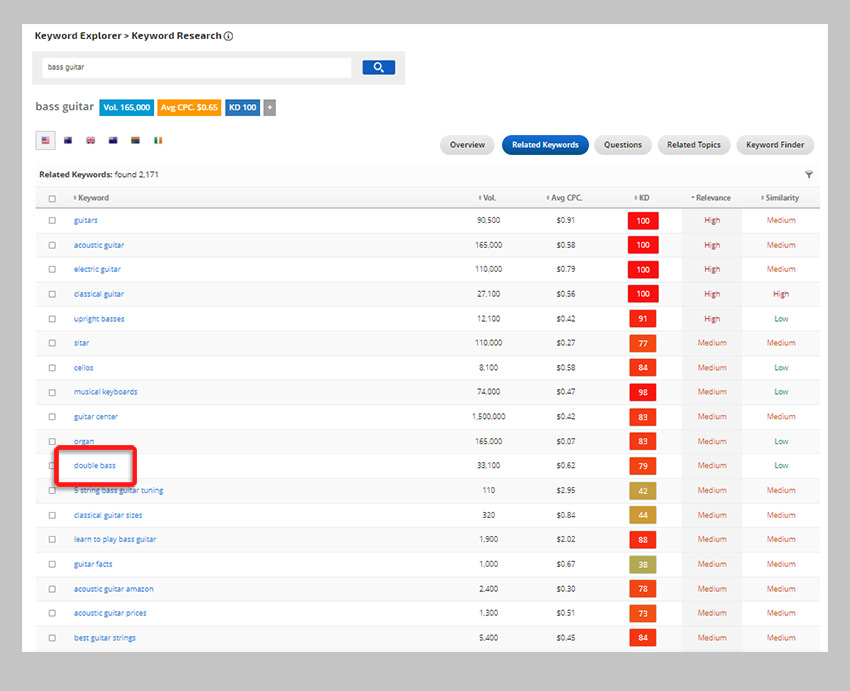Posted by
Darrell Mordecai
What is site architecture? How does it affect SEO?
Site architecture is one of those best practices that makes sense on so many levels. It not only helps search engines crawl and categorize your content, but it also helps your users find exactly what they’re looking for.
And…
At the end of the day, your content exists for your users.
In this post, I’ll get into:
- What site architecture is
- What the two main benefits are
- The relationship between site architecture and semantic SEO
What is Site Architecture?
Site architecture is a website’s overall design of its information. The main point of site architecture is to establish a structure that helps users to navigate through the site’s information.
To understand this, imagine a good old-fashioned library. (Remember those?)
Remember how you found anything in a place like that? Well, the books were neatly categorized and each category had its own place on the wall. What’s more, each category was broken down into subcategories.
So there were fiction and nonfiction sections. Nonfiction was broken down into history, biographies, journalism, etc.
Fiction was broken down into fantasy, science fiction, etc.
Having each section in its own location in the library makes finding books manageable.
So, think of your site architecture as the sections in a library. You must break your content up into topic and subtopic themes.
Doing this takes planning.
Once you’ve mapped out your topics and subtopics, you can build separate sections into your site to house all of these different topics.
The way you can do this is through URL structure, breadcrumbs, category pages, and top-level navigation.
Why is Site Architecture Important?
There are two main benefits you get from site architecture. Site architecture helps:
- Your audience find the information they are looking for
- Your SEO by helping search engines understand what your site is about
Content Siloing Makes Your Content Easily Accessible
Great site architecture serves your website visitors. And since your site exists to serve your visitors, having an easy-to-navigate site architecture is crucial.
A clear easy-to-navigate site helps your audience to easily find the information they are looking for.
What’s more, nothing will kill a sales funnel like a confusing site.
Through well-planned site architecture, you can steer your audience to content designed to push them down the sales funnel.
Also, if you have a stellar UX and a large authoritative library of content, your audience is likely to come back for more. And once you get this right, your site will get bookmarked and will become a go-to resource.
An audience that comes back to your site regularly is by far your most valuable audience. Treat them like gold.
Now don’t get me wrong, I **** Google traffic, but repeat referral traffic is way more valuable than Google traffic. The reason is that people who **** your content and regularly come back for more are people who have a relationship with your brand. This means they are far more likely to become customers and loyal brand ambassadors.
What’s more, these people are also very likely to personally recommend you to their friends.
To achieve this you must make finding content on your site a breeze. If your audience can’t find anything because your blog has no category pages, you may lose a large segment of your audience that is looking for something specific. Focus on serving your users with authoritative content and an intuitive site structure.
Now, site architecture is not only great for your users. It’s also great for SEO and should be built into your semantic SEO strategy.
Site Architecture and Semantic SEO
Search engines discover your content by crawling your site. They do this by crawling from page to page through internal links on your site. These links could be in the body of the content, header, or footer of your page. This means site architecture defines how search engines crawl and index your content.
Crawling and indexing aside, a well-structured site architecture will help search engines understand what your content is about, which could help improve your search rankings.
The way search engines do this is by crawling your pages with the goal of establishing context. When content is thematically clustered together, search engines are able to easily figure out the purpose of each content cluster and each page within each cluster.
The best way to do this is to create content silos.
What Are Content Silos?
A content silo is where a site’s content is broken up into topics and subtopics. The way each topic is structured is from a general topic down to more specific topics or pages. This results in a pyramid-like structure.
What this looks like practically is that the homepage is usually at the top of the pyramid. There are usually links from the homepage that point to second-level pages.
These second-level pages are general topics or themes that help to segment your site into different audiences each with its own search intent. Think of these pages as top-level topics that help your users navigate to the content they are looking for.
So, to understand this, let’s imagine you are running a training site. Your home page should be at the top of the pyramid. A level down you can segment your audience into three groups based on three different user intents.
- The first group might be looking for a specific service. You could create a top-level services page that links to your different services.
- The second group might be looking for general information on how to train a . You could link to your blog content.
- The third group could be existing users that need to log into your site.
There should be third-level pages that link to the second-level pages. If your second-level pages are used to help your users navigate to the content they need, the third level should cover the topic thoroughly. This third level usually consists of a network of content designed to cover many (or all) aspects of the topic as a whole.
So back to our training example, your services page could link to different service pages. Here are some examples:
- Behavioral issues
- Puppy training
- Obedience training
Your blog on the other hand might cover topics like:
- What are the 7 basic commands?
- Can I train my myself?
- What is the first thing I should teach my puppy?
- How do you train a not to jump on you?
This network of content should not only link back up to the second level (navigational) pages but should also link within themselves where it makes sense.

If you research this well, your audience will **** you for creating all of this thorough content. What’s more, if your blog content is thorough, search engines will view your site as an authority on the topic.
If these topics are complex you may need to break them down further into their own sub-topics and create a fourth level.
By structuring your site this way, your theme pyramids are segmenting your site into topics and sub-topics.
As I mentioned above, the reason it’s important to break up content thematically is according to John Mueller, the internal links create context and help Google to understand how the URLs relate to each other. Once Google understands how the URLs relate to each other, it can understand how relevant a piece of content is in the context of the website.
In other words, you should create a hierarchical structure that is structured thematically and by doing that, you are giving Google context as to how your URLs relate to each other in the context of your site.
What this means in essence, is the pages must be conceptually related. When they have this conceptual relationship, by linking them together, you are strengthening the relationships and context.
Let’s understand why.
Semantic Relationships and Internal Linking
The reason that pages that are clustered together through internal links give Google context is Google is a semantic search engine. This means that Google attempts to understand language in a way that imitates the way a person does.
To do this, Google has created a database of known entities. This means Google has its own understanding of what things, people, concepts, and places in the real world are. Google also ‘understands’ how these entities relate to one another. And by doing that, Google is able to answer search queries (or enable search journeys) by either surfacing content on the SERPs or presenting SERP features with the answers in them.
So, for instance, Google understands that Iron Man is a part of the Avengers. In this example, both Iron Man and the Avengers are entities. What’s more, Google understands their relationship. Google understands Iron Man as a member of the avengers.
This means if you type ‘who are the members of the avengers’ into Google, you will be presented with some relevant content in a SERP feature.

This is a big topic and if you want to understand it further, the best place to start is to read our guide to understanding semantic search.
How this relates to internal linking is, Google uses internal links and anchor text to understand how pages relate to each other. By doing this, Google also understands how the entities included in the pages relate to each other.
So a link from a blog page that presents different types of training with an anchor text that includes the words ‘ training’ that points to a page about training services will help Google understand the context of the service page.
In other words, each page describes an entity and the internal links help to show relationships between those entities.
Now that you have the theory down, how do you actually create a site architecture that not only helps your audience find what they are looking for but also improves your semantic SEO?
Planning Your Web Architecture – Start With Your Audience
The key to creating successful site architecture is to start with your home page and build a hierarchy that makes sense for your users. To do this, think about the journeys you want your users to take.
That means you must understand who your users are and what problems they need to solve. It also means you must understand how your product or service will help your audience solve their problems and enhance their lives.
Start With Your Homepage
Who goes to your homepage?
In general, this can be broken down into three groups.
- Existing clients that are looking for something specific on your site
- People who want to do business with you and are checking your site out
- Top of the funnel traffic that stumbled across your site
Most likely the majority of your homepage traffic will come from existing clients and bottom of the funnel traffic. But there might still be a small amount of top-of-the-funnel traffic.
It’s important to truly understand this. The best place to research this is to look at the Google Search Console queries report.
Using Search Console Data to Understand Your Home Page Audiences
To do this, first, filter the data to only show the site’s home page. Once you’ve done that, take a look at the queries.
Most likely you’ll see mostly branded search terms. These are either existing clients or bottom-of-the-funnel traffic.
If you also see informational queries, you might be getting top of the funnel traffic too.
Create A Header Structure to Serve Each Search Intent
With this information in hand, you should build a way for each one of these audiences to take the journey they want to take. This should be in the top navigation menu of your site.
For instance, for bottom-of-the-funnel traffic, you might want to include a reason to do business with your brand and a CTA that links to a product or sign-up page.
For existing users, you might want to feature an easy-to-find login button or top-level header links that point to pages your current users will be interested in finding.
For top-of-the-funnel traffic, you might want to direct them to your blog or other content designed to turn readers into buyers.
And that’s where you can start to build semantic relationships within content in your niche.
Semantic Relationships in Your Blog Content
As I mentioned above, your blog is a great place to build your topical relevance and site profile.
To get this right you should first research how Google and other search engines understand the general topic of your blog. What you are looking for is how they understand the entities and their relationships.
Although I have covered how to do this research in my post about topical authority research, here is a brief overview.
Start by searching for the topic on Google. At this stage, you are not looking for granular information. Instead aim to get an overview of the topic in general. The easiest way to do this is through information found in Knowledge Panels. If you can’t find one look for other SERP features such as Featured Snippets.
These SERP features are a great way to find subtopics for your topic as a whole.
So, if you were to create content on how to play bass guitar, you’d go broad and look at the Google SERP for the term ‘bass guitar’.

As you can see in the screenshot above you have a huge amount of entity information that you can use as subtopics.
Some obvious subtopics would be:
- How to play bass guitar content (based on the video box)
- Advice on how and where to buy a bass guitar
- Informational content based on the People Also Ask box
- History of the instrument
If you can’t find subtopics on the SERPs there are some great tools that are designed to give you entity information such as the Rank Ranger Related Keywords report in the keyword research suite.

As you can see in the screenshot above there are 2171 related terms that could be used as subtopics.
So for instance, based on the report above, you could potentially add a double bass section to your content.
Now, I’m not fleshing this out and if you want to understand how to do this research properly, check out my post on topical authority research.
Okay, so now that you’ve planned your customer journeys and you’ve broken your informational content into topics and subtopics, what do you do now?
Building Your Site Architecture
Now that you understand how you want your content to be consumed, let’s start to create your site architecture.
Site architecture can be built in different ways. Each way has its advantages and disadvantages.
You can see site architecture in:
- Your URL structure
- Breadcrumbs
- Category pages
URL structure
URL structure is the first place you should focus on when building out your site architecture. The better you design your URL structure the more intuitive your site will be for your users.
Simply design your URL structure around the topics and subtopics you have chosen.
This means your URL structures should look something like this:
https://domain.com/topic/subtopic/keyword
This is a simple and effective way to communicate your site structure to both Google and your users.
Breadcrumbs
Once you have your URL structure set up correctly, you should include breadcrumbs. This will give your site visitors an easy and intuitive way to navigate through your site. What’s more, you can communicate your site structure to search engines by including breadcrumb schema.
Now you might be wondering how you create your site architecture for your blog. I mean in general, your blog is not likely segmented into different folders.
Category Pages For Your Blog
In general, blog URLs look like this:
https://domain.com/blog/keyword
To get around this, a great strategy is to create blog category pages. This way you can create content silos that link out to each subtopic.
Additionally, to keep things simple for both users and search engines, you should aim to create a flat(ish) site architecture.
What is a Flat(ish) Site Architecture?
A flat architecture is one where your users and crawlers can reach all of your pages in a maximum of four clicks.
On the other hand, a deep architecture means your users can only access certain pages by clicking more than four times.
Now, the reason a flat architecture is important is it means your users can quickly and easily find the content they are looking for.
Order Out Of Chaos
At this point, you should have a pretty solid idea of how to organize the information on your site. Having that clear will help you build website architecture that is easy to navigate making your site a simple resource that your audience will bookmark and come back to regularly.
There is no question that getting this right can directly move your business forward and can influence every stage of the buyer’s journey.
It’ll help your:
- Top of the funnel audience to find the content they are looking for
- Middle of the funnel audience to find resources that build trust
- Bottom of the funnel audience to take action with as little friction as possible
This makes getting this right a must for every online business.

